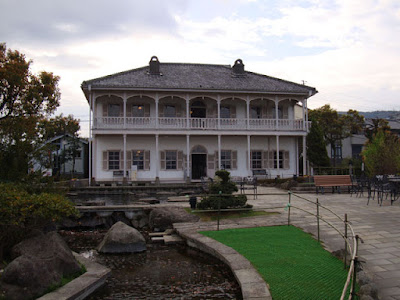Ōura Church was said to be the oldest church in Japan.

The moving sidewalk leading to Glover Garden, the residence of Tomas Glover that was now an open air museum of relocated residences of foreigners in Nagasaki.

This building used to be the dormitories for Dutch sailors in Nagasaki.

Colorful tulips in front of the residence of Glover.

Mikosh were displayed in culture center between festivals.

Statues of Confucius’ students stood before Confucius Shrine.

The blue houses of western community at Higashi-Yamate neighborhood.

Cheery blossoming in front of the Higashi-Yamate Juniban Mansion.

The map on tiles near the Dutch hill.

Spectacles Bridge was named after the arches of the bridge and their reflections.

Sōfuku-ji was a Buddhist temple built by Chinese monks.

The Chinese style main hall of Sōfuku-ji.

This was the ground zero of Nagasaki. The brick column was the remaining structure of the original Urakami Cathedral.

The park at ground zero served as a place where locals went for recreation or just took a break.

Documentary of atomic bombing at Nagasaki was played on the screens behind the debris displayed in the Atomic Bomb Museum.

The area damaged by radiation was projected to the model of Nagasaki.

The reflective pool at the roof of the Peace Memorial Hall.

Statues gifted to Nagasaki from countries around the world shared the same message of peace.

Urakami Cathedral was rebuilt on a hill near the ground zero.

A famous shop selling Castella, the Nagasaki specialty originated from Portugal.

The Next Day